🥜 Let’s Get Crackin’
‘How often should we be sending to our audiences’ is a question we get ALL THE TIME here at Postie.
And to be honest, it’s a loaded question because the best answer is all marketers’ arch nemesis; it depends.
But, we won’t do that to you today; you deserve better.
Instead, let’s walk through a testing framework that you can use to find your minimum suppression window to maximize sends to your high-converting audience without sacrificing campaign performance.
Not sure what a suppression window is? This sums it up pretty well.
Disclaimer: Our data science team would be unhappy if we didn’t call out that this is a bit of a simplification, and your results may vary.
So, if you want to get further into the weeds on this, reach out so we can put some time aside to chat in more detail. Kapeesh?
Good, great, grand — OK, let’s dive in.
First Things First: Let’s Define the Problem.
At this point, I’m going to assume you’re a savvy marketer, and you’re using audience clusters. Not sure if you are? Here’s an exercise to determine if you’re using clusters or just basic personas.
If you aren’t, start using them! It’s low-hanging fruit and yields powerful results. 💡
At the beginning of your DM campaign, you send to the top decile of your cluster — the folks with the highest probability of converting — with each send, you move further down your model until something happens — performance drops.
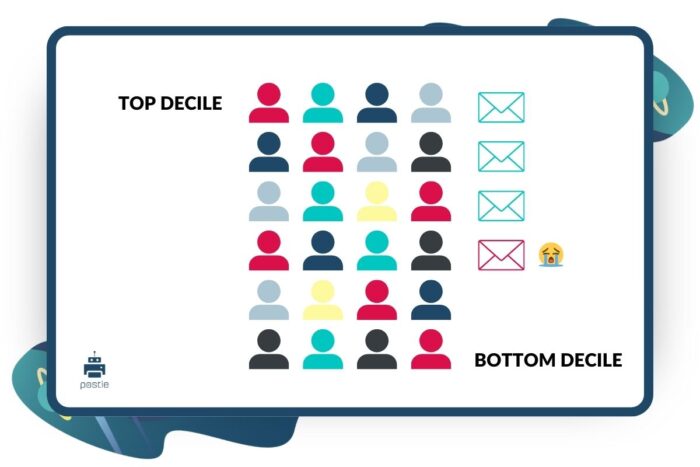
Many marketers will want to start re-sending to the top decile to continue pulling in those sweet, sweet conversions.
But if you do that too soon, even those high converters at the top of your model will show diminished performance.
You’ll question whether this channel is right for your brand, you might second guess scaling direct mail, and you might even start crying into your keyboard.
It’s OK to cry. But it doesn’t have to be that way.
Second Things, … Second? Whatever: Let’s Riff on the Solution.
To find out the MINIMUM amount of time you need to wait before re-sending your top converters, you need to run a test, and this is how you do it.
Step 1:
Break off the top decile of your audience into a group and then, randomly, that’s key, distribute them into five groups that you will then send to every 15 days for 90 days.
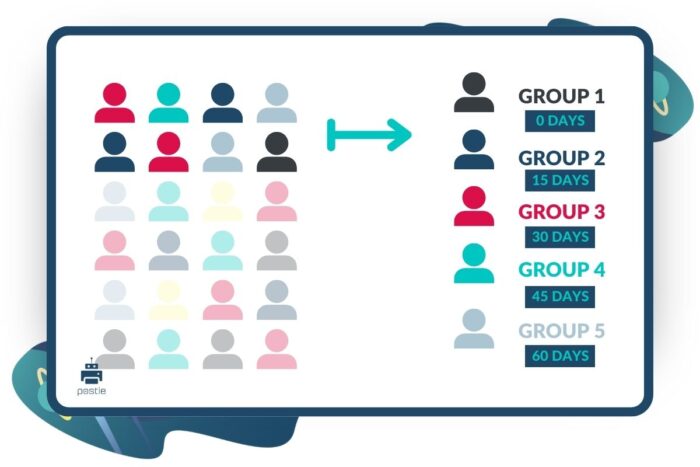
Step 2:
The previous step is all building up to the 90th day, where you’ll re-send all the groups for the second time, simultaneously.
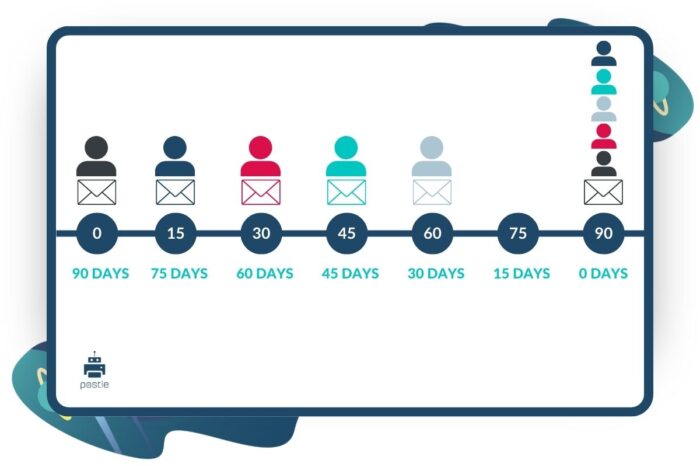
With every send you make closer to that final 90-day test, your suppression window gets smaller and smaller. You’re effectively testing your audience’s tolerance for a shorter communication window systematically.
Step 3:
After the final 90-day send, you can review the conversion rates of that last campaign across all five groups. You can also check lift and a variety of other KPIs, but as mentioned earlier, this is a simplified approach.
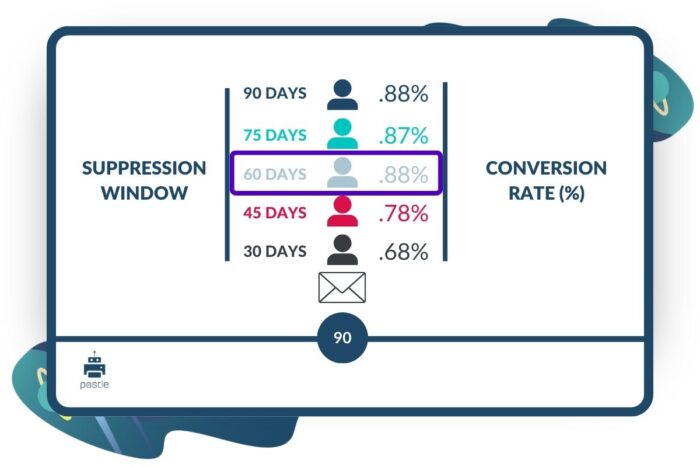
Look for when the conversion rate drops. That’s your audience’s threshold and should be the minimum amount of time you wait before re-sending to that audience. BOOM! 💥
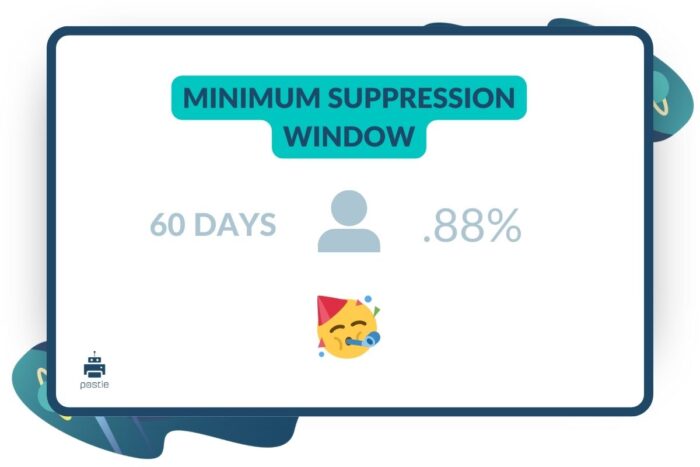
Now, if we re-visit our sad scenario from above when you hit that drop in performance as you mail down your model, if it’s been 60 days (in the case of this example) since your last send, you’re free to re-send the top decile of your audience and watch those conversions come pouring in!
If it hasn’t been 60 days (again, your timeframe will vary), reach out, as we always have some tricks up our sleeves. 🪄
Now that we know how to define the minimum amount of time to wait before resending an audience, you might wonder if you should re-mail your audience the moment that 60-day window elapses.
Care to find out? Check out 3 more steps master sending frequency.
